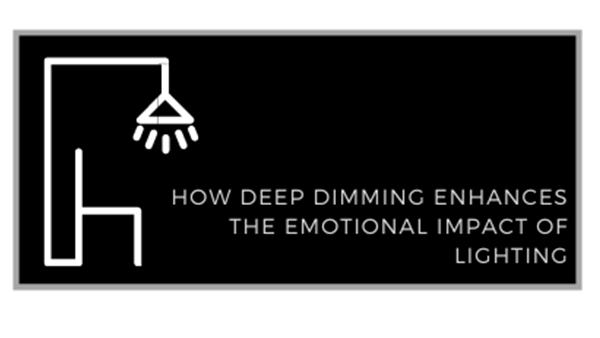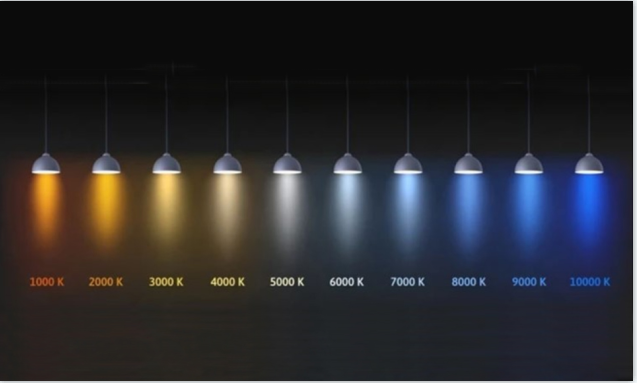Deep dimming enhances the emotional impact of lighting through precise controlling over very low light levels. This allows for smooth transitions and granular adjustments that create specific moods and atmospheres. In this article, let’s explore how deep dimming enhances the emotional impact of lighting.
How Deep Dimming Enhances the Emotional Impact of Lighting?
What is the deep dimming?
Deep dimming refers to the ability to smoothly and uniformly dim LED lights down to extremely low levels, typically 0.1% of full brightness or lower.
The key points about deep dimming from the sources are:
Deep dimming LEDs can dim smoothly all the way down to 0.1% brightness or lower, maintaining uniform illumination across fixtures. Ordinary LED drivers typically only dim to around 1% brightness.
At 1% dimming, the human eye still perceives around 10% brightness due to its logarithmic response to light intensity changes. Deep dimming down to 0.1% allows control over the bottom 10% of the perceived intensity range that ordinary drivers cannot reach.
This fine-grained dimming control at very low light levels is critical for creating precise ambiance and mood lighting effects, especially in settings like theaters, restaurants, and high-end residential lighting.
Deep dimming also enables a smooth “fade to dark” capability, where lights can fade out imperceptibly to complete darkness rather than an abrupt cutoff. This enhances the quality and emotional impact of lighting transitions.
LED dimmable drivers from Euchips are engineered specifically for this ultra-low, uniform dimming performance down to 0.1% intensity.
What are the main challenges in achieving deep dimming in LED lighting?
Achieving deep dimming in LED lighting presents several challenges, including:
Flicker: LED lights can flicker when dimmed, which can be noticeable and distracting, particularly at very low light levels. Flicker can also cause discomfort or headaches for some individuals. Addressing flicker requires careful design of LED drivers and control systems to maintain smooth and consistent dimming performance.
Related Article: Why do Dimmable LED Lights Flicker?
Dimming Range: Some LED fixtures may have limited dimming range, meaning they cannot achieve very low light levels without flickering or shutting off completely. Extending the dimming range requires robust LED driver designs capable of delivering stable output at very low currents.
Compatibility: Not all LED fixtures are compatible with standard dimming control systems. Ensuring compatibility between LED drivers and dimmer switches is crucial for achieving smooth and reliable dimming performance. Compatibility issues can arise due to differences in communication protocols, dimming methods (e.g., phase-cut vs. PWM), or load requirements.
Cost: Implementing deep dimming capabilities in LED fixtures may require additional components or specialized LED drivers, increasing the overall cost of the lighting system. Balancing cost considerations with performance requirements is important when selecting LED lighting solutions for applications that demand deep dimming capabilities.
How deep dimming enhances the emotional impact of lighting?
Creating Moods and Atmospheres
The emotional impact of lighting is primarily determined by the moods and atmospheres it creates. Deep dimming allows for the fine-tuning of lighting to match specific moods, whether it’s a cozy evening at home, a romantic dinner, or an intimate gathering. By adjusting the brightness, color temperature, and even the direction of light, deep dimming can transform a space from one emotional state to another, setting the perfect tone for any occasion.
Enhancing Comfort and Relaxation
One of the most significant emotional impacts of deep dimming is its ability to enhance comfort and relaxation. By reducing the brightness of lighting, deep dimming eliminates harsh shadows and glare, creating a more soothing and inviting environment. This is particularly beneficial in spaces where relaxation is a priority, such as bedrooms, living rooms, and spas. The calming effect of low-level lighting promotes a sense of tranquility and well-being, reducing stress and anxiety.
Evoking Emotional Responses
Deep dimming is also effective in evoking specific emotional responses. Bright, vibrant lighting can create a sense of excitement and energy, while soft, warm lighting can induce feelings of comfort and nostalgia. By adjusting the lighting to match the emotional intent of a space, deep dimming helps to create a more immersive and emotionally engaging experience. This is particularly important in spaces where emotional connection is a key goal, such as museums, galleries, and retail stores.
Personalizing Lighting Experiences
Another crucial aspect of deep dimming is its ability to personalize lighting experiences. Different individuals have different preferences and needs when it comes to lighting, and deep dimming allows for a high degree of customization. By adjusting the brightness, color temperature, and timing of lighting, individuals can create lighting scenes that perfectly match their mood, activities, and personal style. This personalization not only enhances the emotional impact of lighting but also promotes a sense of ownership and satisfaction with the space.
Creating Visual Interest and Drama
Deep dimming can also be used to create visual interest and drama in a space. By highlighting certain areas or objects with brighter lighting while dimming others, deep dimming creates a sense of depth and texture that draws the viewer’s attention. This can be particularly effective in spaces with architectural features or focal points that deserve special emphasis. The contrast between bright and dim areas creates a visually compelling scene that captures the viewer’s imagination and enhances the emotional impact of the lighting.
Advancing Technology and Integration
The emotional impact of deep dimming is further enhanced by the advancements in lighting technology and integration. Modern lighting systems often incorporate sensors, timers, and smart controls that allow for automatic adjustments based on occupancy, time of day, and other variables. These technologies enable deep dimming to be seamlessly integrated into daily routines and spaces, ensuring that the lighting always matches the emotional needs of the occupants. The ability to control lighting remotely or through voice commands also adds to the convenience and emotional impact of deep dimming.
So in summary, deep dimming gives us precise control over extremely low light output levels and smooth dimming transitions, allowing them to craft atmospherics and emotional lighting effects with great nuance and impact.
Post time: Aug-23-2024


